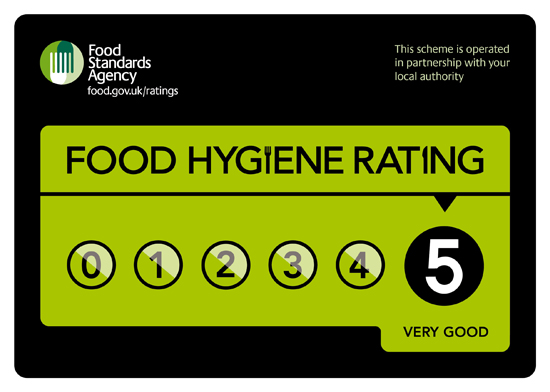
Commercial Deep Cleaning
The hygiene and cleanliness of a restaurant should be a main priority for all staff. Commercial kitchens are often the subject of lack of maintenance which results in unsanitary conditions, therefore increased risk of food contamination and may ultimately mean government closure of your restaurant. Cleaning rotas may be in place but not all staff will clean as thoroughly as they should. From all staff member’s first day, the importance of hygiene and thorough cleanliness should be emphasised and training and demonstrations of all cleaning processes should be made a priority. The main areas of a commercial kitchen will always be dealt with i.e. the main floor areas, inside equipment and work tops, but there are many areas either neglected or forgotten. These areas are just as important as other sections and should be regularly assessed to ensure that they are being appropriately sanitised and maintained.
Areas may include;
- Any food or sauce splashes on the walls.
If preparing, cooking or disposing of any food items, splatters can easily occur. These splashes will encourage insects and bacteria to grow and feed. Ideally any spillages or splashes should be wiped with an appropriate spray and cleaned immediately, however in a bustling commercial kitchen this may not be a practical option every time. At the end of a shift, all surfaces including the walls should be thoroughly scrubbed. The aim is not only for hygiene but also for aesthetic purposes. Nobody wants to eat food prepared in a stain saturated kitchen likewise, the kitchen staff will not want to be working in an unpleasant environment.
- Meat slicers.
There are many intricate components to commercial meat slicers. The larger areas will be wiped, but many staff will fail to thoroughly clean the blade. This is the most important part, as it is what comes into contact with food items. If bacteria are allowed to form here, it will undoubtedly be transferred to other produce.
- Equipment.
Although surfaces and the interior of kitchen equipment is generally kept to a high standard, many restaurant’s fail to include underneath and behind units. These places can become a central hive of activity for bacterial growth. The food debris which inevitably falls into nooks and cranny’s, combined with the heat in the kitchen, provides an ideal environment for vermin and bacteria. Units should be pulled out of place where possible in order for the floors to be swept and sanitised. Where this isn’t an option, staff will need to clean the stated areas as effectively as possible. This cleaning task should be completed as and when is necessary.
- Refrigeration components.
The coils located to the rear of refrigeration should be cleaned regularly. If a build-up of dirt and grease is allowed to form, the efficiency of the unit will be compromised. The equipment will not run consistently and the extra pressure put on the units will lead to future problems and breakdowns. Maintaining and looking after expensive commercial equipment will ensure that you get your money’s worth through continuous usage.
- Bin and waste area.
Disposing of kitchen waste in contained skips or bins should help to minimise rodents, flies and disease. The lids should always remain closed and should never be filled above maximum capacity. Leaving a bin lid open is giving an open invitation to little critters that are undesirable to food sites, to come and feast on food scraps. Bins should be emptied regularly and hosed down and cleaned along with the whole of the waste storage area.
Commercial kitchens are not the only areas within a restaurant that hold hidden and often forgotten cleaning hot spots. If your restaurant has a bar section, this will also hold areas that require further inspection.
- Drinks nozzles.
The sugary syrup that is left as residue after pouring certain drinks will become set and solidify inside the pouring nozzles. This sweetness will attract bacteria and flies like a magnet. At the end of shift each night, all nozzles, soft drinks and beers should be removed, cleaned and soaked to prevent any build-up of deposits.
- Glasswashers.
The main interior and exterior of commercial glasswashers will be cleaned as requested, however the spray arms will require extra attention. A build-up of a combination of elements (bacteria, algae, lime scale found in water) will create a pink, jelly substance that will block the jet outlets and will hinder the effectiveness of the wash. Each spray arm should be tended to individually. Each jet attachment should be unscrewed and cleaned followed by the main spray arm. This process should be repeated as needed. If the machine is thoroughly cleaned every night including around the door seals, this build up will dramatically decrease. The equipment should be correctly installed and linked to a softener. Failure to do this will also lead to this build-up becoming an issue.
- Ice machines.
These are perhaps the most neglected pieces of equipment and are seldom cleaned. Ice can carry bacteria and is easily contaminated. Lack of cleaning will allow bacteria to form and grow, causing potentially harmful ice being served to customers. Ice buckets also require the same care and attention. Ice should be emptied and the interior of machines thoroughly scrubbed and rinsed before being filled again.
These often forgotten cleaning tips will not only keep your restaurant hygienic and fresh but will also ensure that unscheduled visits from health officials will pose no problems. The longevity of your equipment will also be extended due to regular and thorough in house maintenance.

Leave a Comment
Your email address will not be published. Required fields are marked *